The Light and Airy Light-O-Day® Hydrangea
Cover image courtesy of Bailey Nurseries
A Variegated Hydrangea with Lacecap Flowers
The Light-O-Day® hydrangea (Hydrangea macrophylla ‘BAILDAY’ Light-O-Day®) is a cultivar of the bigleaf hydrangea, a deciduous shrub native to Japan and China belonging to the Hydrangeaceae family.
This elegant hydrangea cultivar has stunning lacecap flowers and variegated foliage.
Flowers are comprised of bright white, sterile outer florets surrounding small, fertile inner flowers which can be blue or pink depending on the soil pH.
Refined green leaves are edged with pure white, giving the shrub a bright, airy and clean appearance.
Light-O-Day® is a moderately fast-growing hydrangea, adding 13 - 24+ inches of growth per year and eventually reaching 3-5 feet in height and width.
This variegated hydrangea grows in zones 5-9 and prefers part shade and rich, well-draining soil.
Part shade is important since these hydrangeas can be sensitive to intense sun exposure, particularly in the afternoon.
Deer will eat hydrangea flower buds and leaves, especially the tender young growth.
If you have deer browsing in your yard and would like to grow a flowering shrub in partial shade, try Flaming Silver Japanese Andromeda as a deer-resistant alternative to the bigleaf hydrangea.
Read on for thoughts on where to plant this beautiful hydrangea, and get planting companion ideas too!
The Light-O-Day® hydrangea has variegated leaves and stunning lacecap flowers. Image courtesy of Bailey Nurseries.
How to Plant and Grow Light-O-Day® Hydrangea
Planting: The best time of year to plant a hydrangea is in the spring or fall, giving the roots time to establish before the onset of extreme hot or cold weather. Water deeply immediately after planting. Keep in mind that most nurseries have the best selection in the spring time - Light-O-Day® may be sold out by the time fall comes around.
Location: Choose a location with well-drained soil that is rich in organic matter. Light-O-Day® hydrangeas prefer soil that retains moisture but does not become waterlogged. Select a spot with partial shade and protection from the intense afternoon sun.
Soil: Amend the soil with organic matter, such as compost, shredded leaves, or Leaf-gro® to improve drainage and soil fertility. If you would like the inner florets of your Light-O-Day® hydrangea to bloom specifically pink or blue, consider getting a soil test and adding either sulfur or lime to the soil. Add sulfur for blue flowers and lime for pink blooms.
Mulch: Apply a layer of organic mulch around the base of the plant to retain soil moisture, regulate temperature, and suppress weeds. Make sure the mulch does not touch the base of the plant.
Watering: Keep the soil consistently moist but not waterlogged, especially during periods of drought. Deep watering is preferable to encourage the development of a strong root system (Are you in a drought? Check the U.S. Drought Monitor).
Fertilization: Hydrangeas typically do not need fertilization when they are given the rich, fertile soil they prefer. Each spring, spread a layer of compost, shredded leaves or Leaf-gro® around the base of your hydrangea, being careful to keep away from the base of the shrub.
Pruning: The Light-O-Day® variegated hydrangea grows buds in late summer and fall on old wood. Consequently, pruning should be done in mid- to-late summer, immediately after flowering. No more than 1/3 of the plant should be cut back.
Pest and Diseases: Light-O-Day® hydrangeas are prone to damage from late spring frosts - leaves and buds can appear scorched, black and burnt. Fungal diseases such as powdery mildew, cercospora leaf spot and anthracnose can also affect these shrubs. Cottony camellia scale is an occasional pest problem. Ensure good air circulation around your plants to minimize the risk of disease, and practice good watering habits (see “How to Water your Plants” to brush up on your watering skills).
Why Didn’t My Light-O-Day® Hydrangea Flower?
Light-O-Day® hydrangea buds, like those of many hydrangea varieties, can be susceptible to damage from extreme weather conditions.
Frost damage to this variegated hydrangea can range from minor to severe, and can look like shriveled brown or black leaves and buds and drooping, wilting flower heads.
Late Spring Frosts: One of the primary risks is exposure to late spring frosts. Light-O-Day® hydrangea buds are formed on old wood, and if a late frost occurs after the buds have emerged, it can damage or kill them, leading to either reduced or no flowering for the rest of the summer.
Freezing Temperatures: Extremely low temperatures, especially in winter or early spring, can also damage the buds. Prolonged exposure to freezing temperatures can cause the buds to freeze and become more susceptible to damage.
Unseasonal Temperature Fluctuations: Drastic fluctuations in temperatures during the bud development stage can be harmful. Warm periods followed by sudden cold snaps can disrupt the normal development of buds, potentially leading to bud damage.
Does the Light-O-Day® Hydrangea Bloom on Old or New Wood?
The Light-O-Day® hydrangea blooms on old wood. Flower buds for the summer season have developed on the previous year's growth.
This shrub generally does not need pruning, but if you must prune your hydrangea, it should be done after it has finished blooming for the year and before the next season's buds begin to form.
Pruning too late can risk removing the buds, potentially affecting the plant's blooming performance for the following season.
To put this in context of the seasonal gardening calendar:
Spring - buds have been set the previous year, so don’t prune!
Summer - the shrub is flowering, enjoy the show! When flowering has finished, you have a small window of time to prune the shrub, if needed, before late summer. Flower buds develop starting in late summer or early fall. Complete your pruning prior to late summer.
Fall - buds are forming for next spring’s flowering show - don’t prune! You do not need to prune back Light-O-Day® hydrangeas in the fall.
Winter - buds are set for the springtime - don’t prune!
The variegated leaves of Light-O-Day hydrangea add a light and airy touch to the landscape. Image courtesy of Bailey Nurseries.
Do Light-O-Day® Hydrangeas Like Sun or Shade?
Light-O-Day® hydrangeas thrive in part shade and do best with 2-4 hours of sunlight per day.
While they can tolerate more sun, dappled or filtered light is preferable with protection from the intense hot afternoon sun.
In hot climates, providing this variegated hydrangea with morning sun and afternoon shade can help prevent the flowers and leaves from wilting and scorching.
In cooler regions, they may tolerate more sun, but protection from harsh afternoon sunlight is still recommended.
Planting Companions for Light-O-Day® Hydrangea
Feeling inspired to plant a Light-O-Day® hydrangea in your garden? Here are some ideas for planting companions. All favor the same partial shade conditions and moist, rich, well-draining soil that this variegated hydrangea loves.
Dee Runk Boxwood (Buxus sempervirens ‘Dee Runk’): An elegant, columnar boxwood with small evergreen leaves and a structured shape. Contrasts nicely with the larger leaves and loose form of the Light-O-Day® hydrangea.
Delaware Valley White Azalea (Rhododendron ‘Delaware Valley White’): The white flowers and dark green foliage of this evergreen azalea won’t clash with the variegated foliage and dramatic flowers of Light-O-Day®.
Japanese Plum Yew (Cephalotaxus species): Shade-tolerant needled evergreens with a soft texture resembling yews. ‘Prostrata’ and ‘Hedgehog’ are low-growing and will make a nice ground cover around a hydrangea; ‘Fastigiata’ makes a great vertical accent.
Himalayan Sweet Box (Sarcococca hookeriana var. humilis): A dwarf, compact, spreading broadleaf evergreen with glossy deep green leaves. The ultimate low-maintenance companion for hydrangeas.
Astilbe (Astilbe species): The fine textured foliage and spiky summer flowers of astilbe are the perfect partner for a Light-O-Day® hydrangea. Purple-flowering varieties like ‘Amethyst’, ‘Black and Blue’, and ‘Dark Side of the Moon’ look particularly nice.
Cranesbill (Geranium species): Vigorous, long-blooming perennial geraniums. Blue-flowered varieties like ‘Johnson’s Blue’ or ‘Rozanne’ look great when planted next to Light-O-Day®.
Hosta (Hosta species): The large leaves of a silvery-blue hosta contrast nicely with the busy foliage and flowers of Light-O-Day® hydrangea. Try ‘Halcyon’, ‘Silver Bullet’, ‘Krossa Regal’, or ‘Big Daddy’.
Moonshine Pulmonaria (Pulmonaria ‘Moonshine’): A low, compact, mound-forming plant with shimmering silver leaves and pale blue flowers.
Landscaping Ideas for Light-O-Day® Hydrangea
Accent Planting: Use a Light-O-Day® hydrangea as a focal point in the landscape. Plant strategically to draw attention to specific areas of the garden, like entryways, water features, pathways, or seating areas.
Foundation Planting: Plant Light-O-Day® hydrangeas along the foundation of your home. Their variegated foliage and eye-catching blooms will enhance the curb appeal of your home.
Side Yard Planting: A side yard with morning sun and afternoon shade is the perfect situation for a Light-O-Day® hydrangea.
Mass Planting: Plant Light-O-Day® hydrangeas in groups to create a mass of color. This approach works well in large garden beds or along pathways or fences, providing a striking visual impact.
Woodland Garden: The dappled shade underneath the canopy of tall trees is an ideal spot for a Light-O-Day® hydrangea. Combine with other partial-shade loving plants like camellias, Japanese andromeda, azaleas, and rhododendrons.
Container Garden: Grow Light-O-Day® hydrangeas in containers on patios, balconies, or front porches, bringing a dramatic burst of color and interest to a smaller space. Containers dry out quickly and require more water than garden beds.
The flowers of the LIght-O-Day hydrangea can be blue or pink, depending on the soil pH. Image courtesy of Bailey Nurseries
How to Change the Color of Light-O-Day® Hydrangea
You can change the color of the small, inner florets of your Light-O-Day® hydrangea by manipulating the pH of the soil.
The pH level affects the availability of aluminum in the soil, in turn influencing the color of hydrangea flowers.
Adding aluminum sulfate, garden sulfur, or organic matter makes the soil more acidic and will turn the color of this variegated hydrangea’s tiny inner blooms an intense blue.
Adding garden lime raises the soil pH and turns inner blooms pink.
The outer, sterile florets will remain a bright white, regardless of the soil pH.
Be patient - it can take months for change to become evident!
Are Light-O-Day® Hydrangeas Poisonous to Dogs?
The Light-O-Day® variegated hydrangea, like all hydrangeas, contains compounds that can be toxic to dogs if ingested, specifically cyanogenic glycosides.
These compounds can release cyanide when broken down in the digestive system.
However, the level of toxins in bigleaf hydrangeas are relatively low, and instances of dogs getting poisoned by consuming these plants are rare.
While the risk of severe poisoning is low, it’s important to monitor your dog's behavior in outdoor spaces.
If you suspect your dog has ingested a toxic plant, seek immediate veterinary care or contact the Pet Poison Hotline.
Read “Which Plants are Toxic to Dogs” for more information on plants poisonous to dogs.




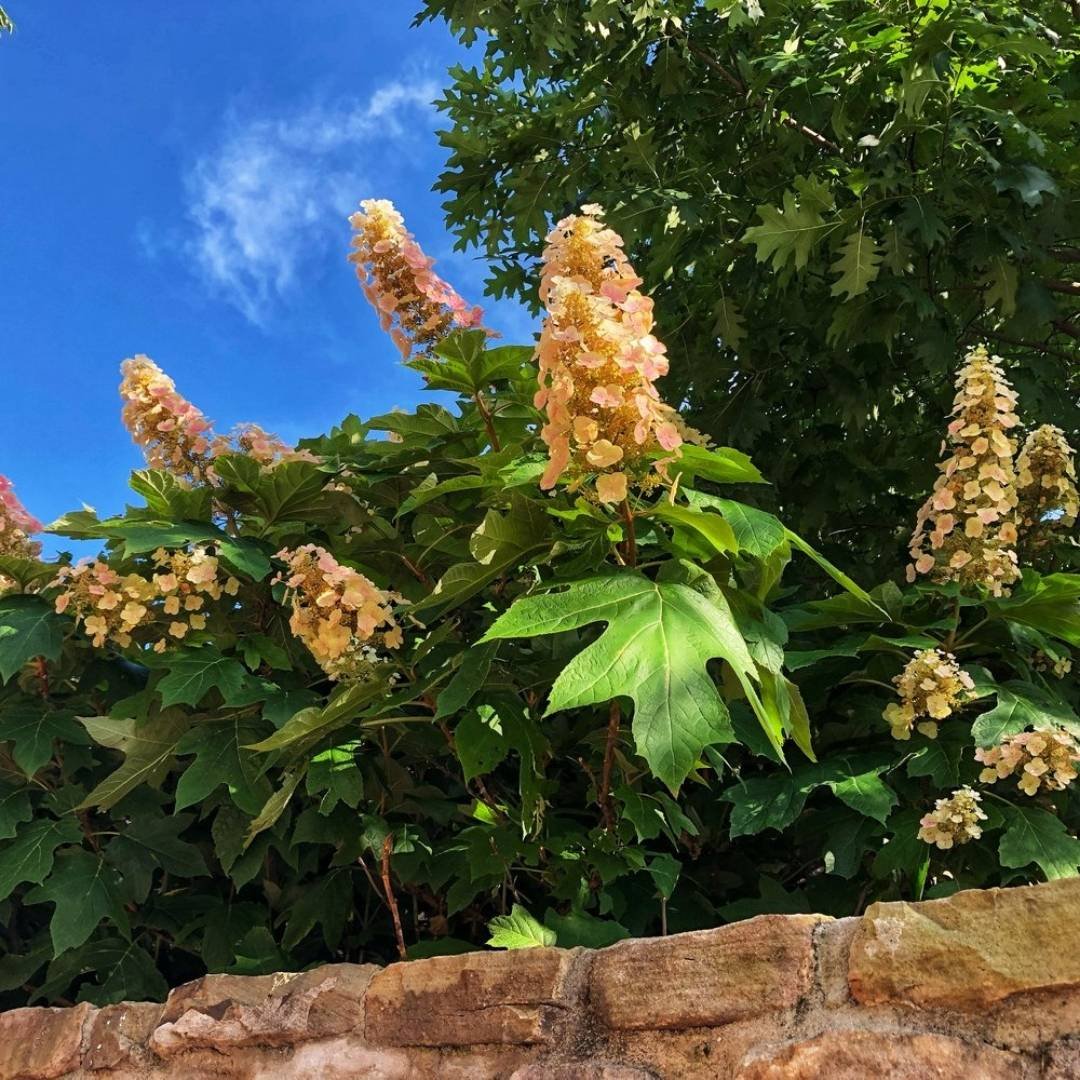



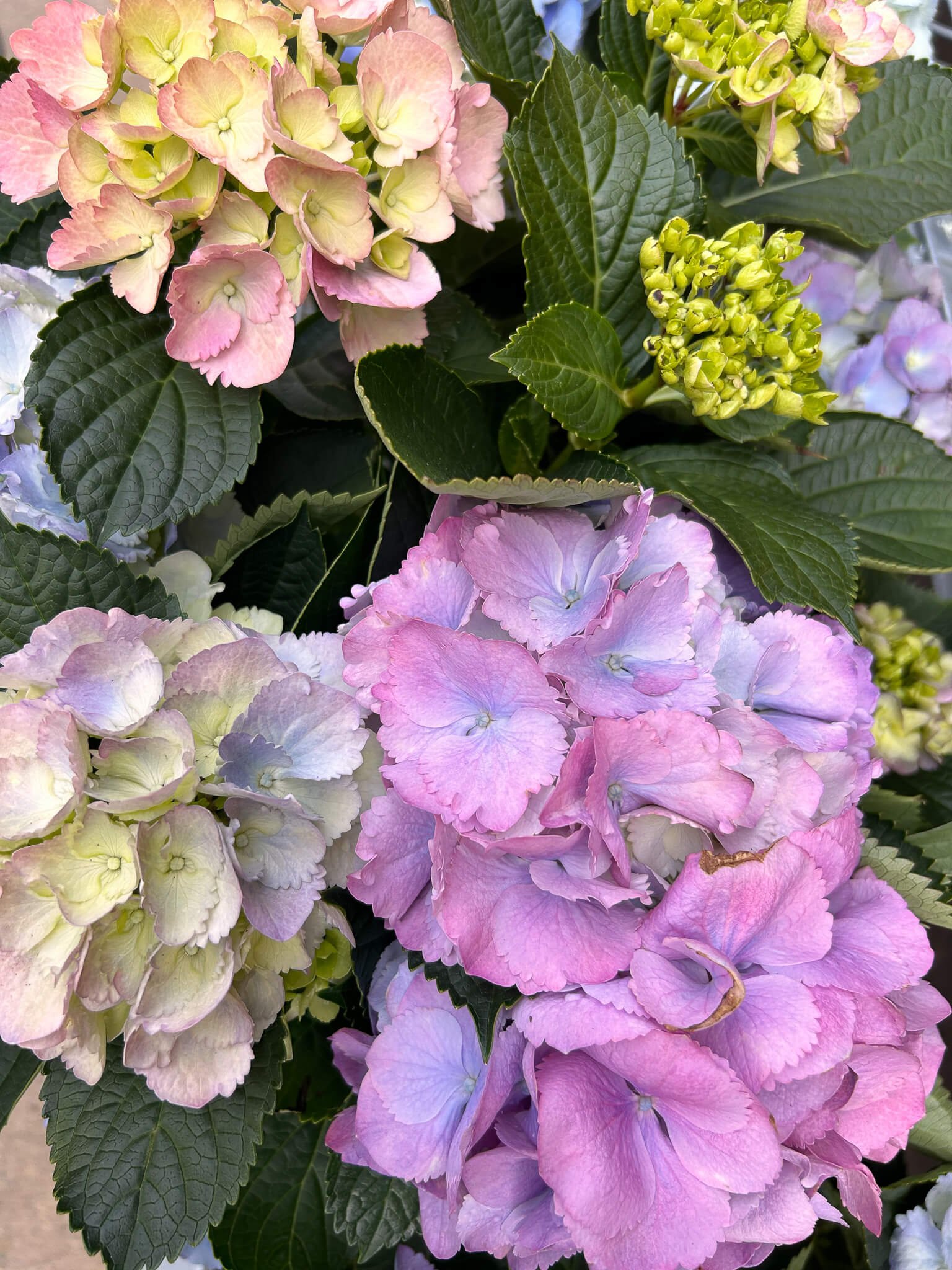
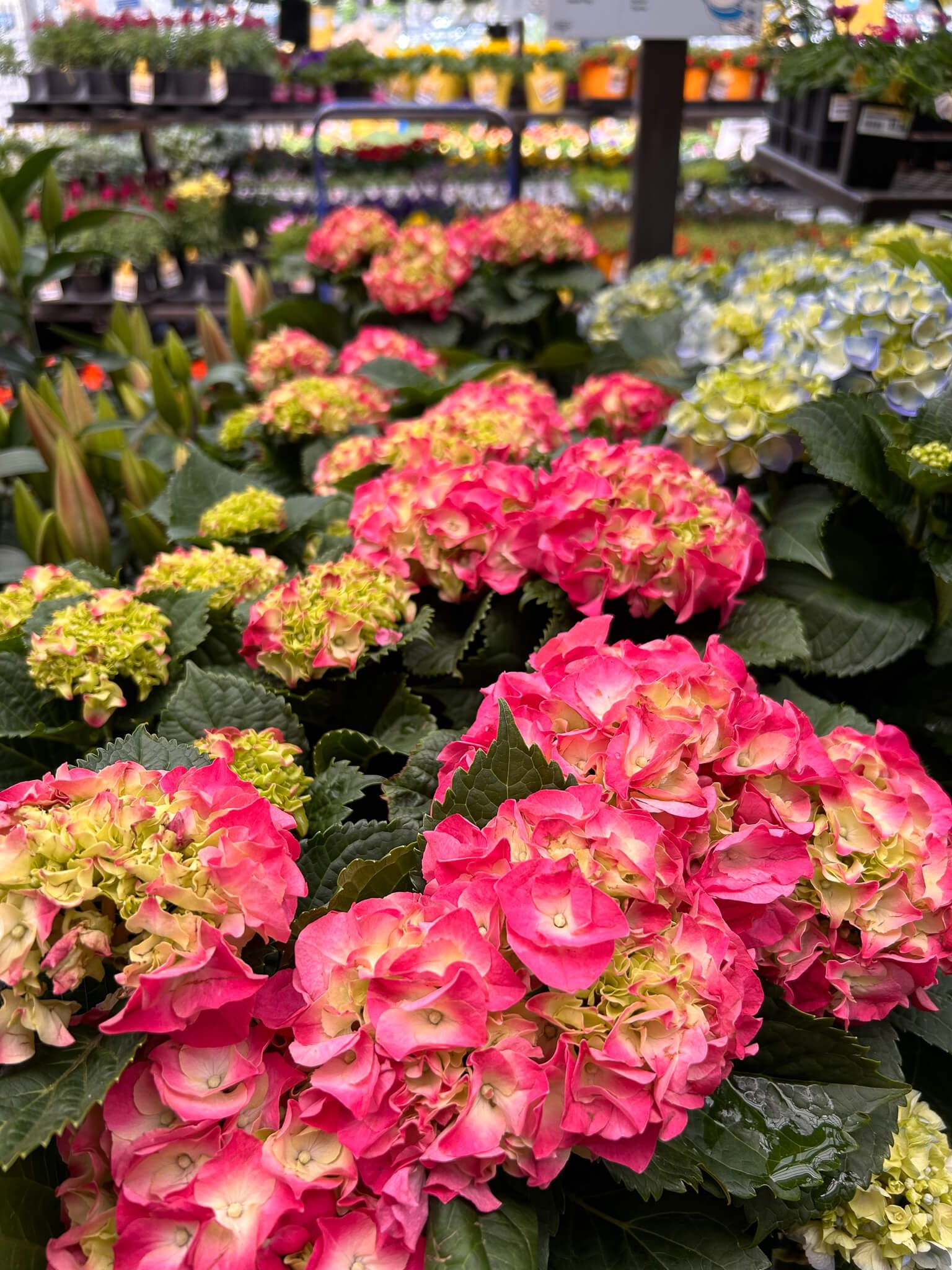



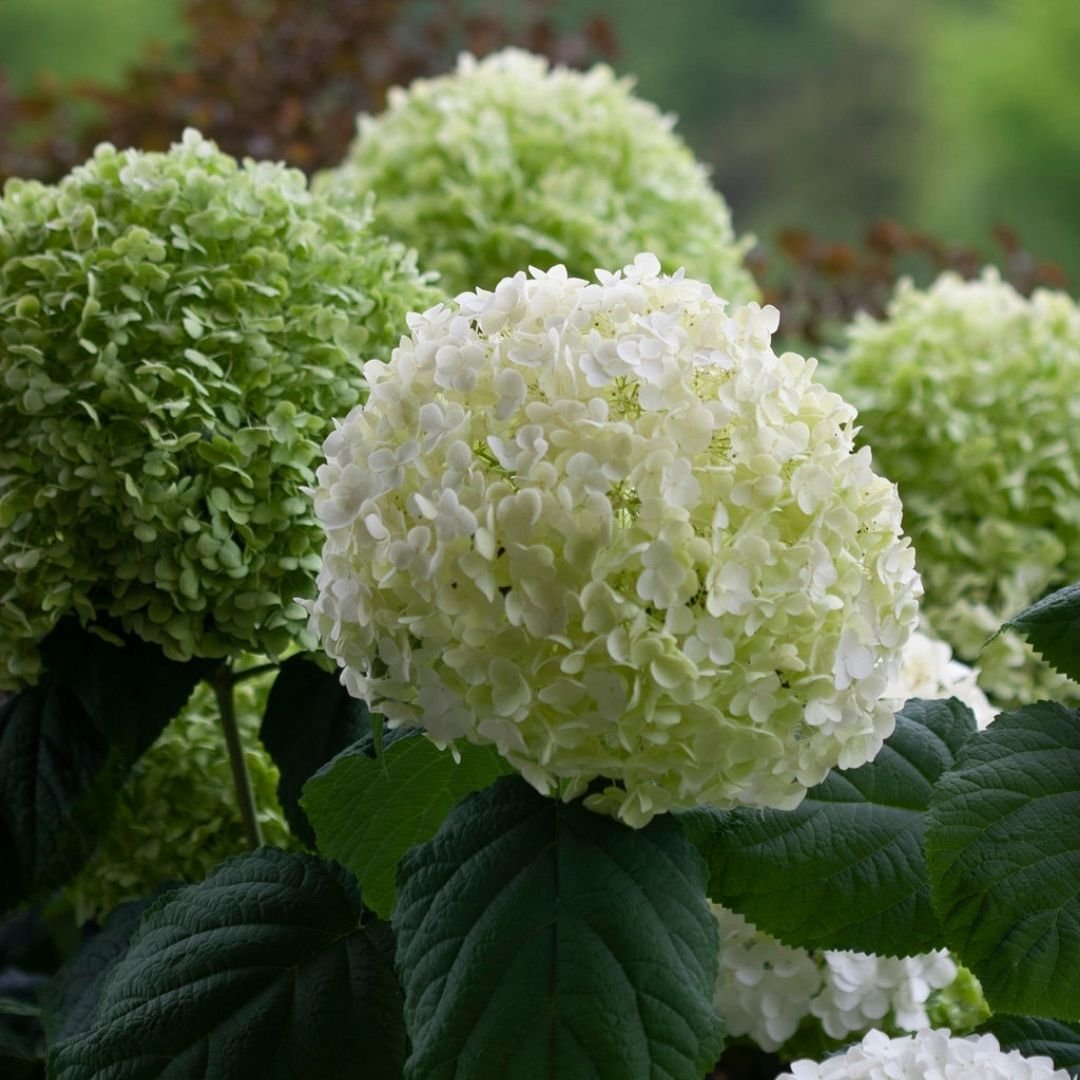





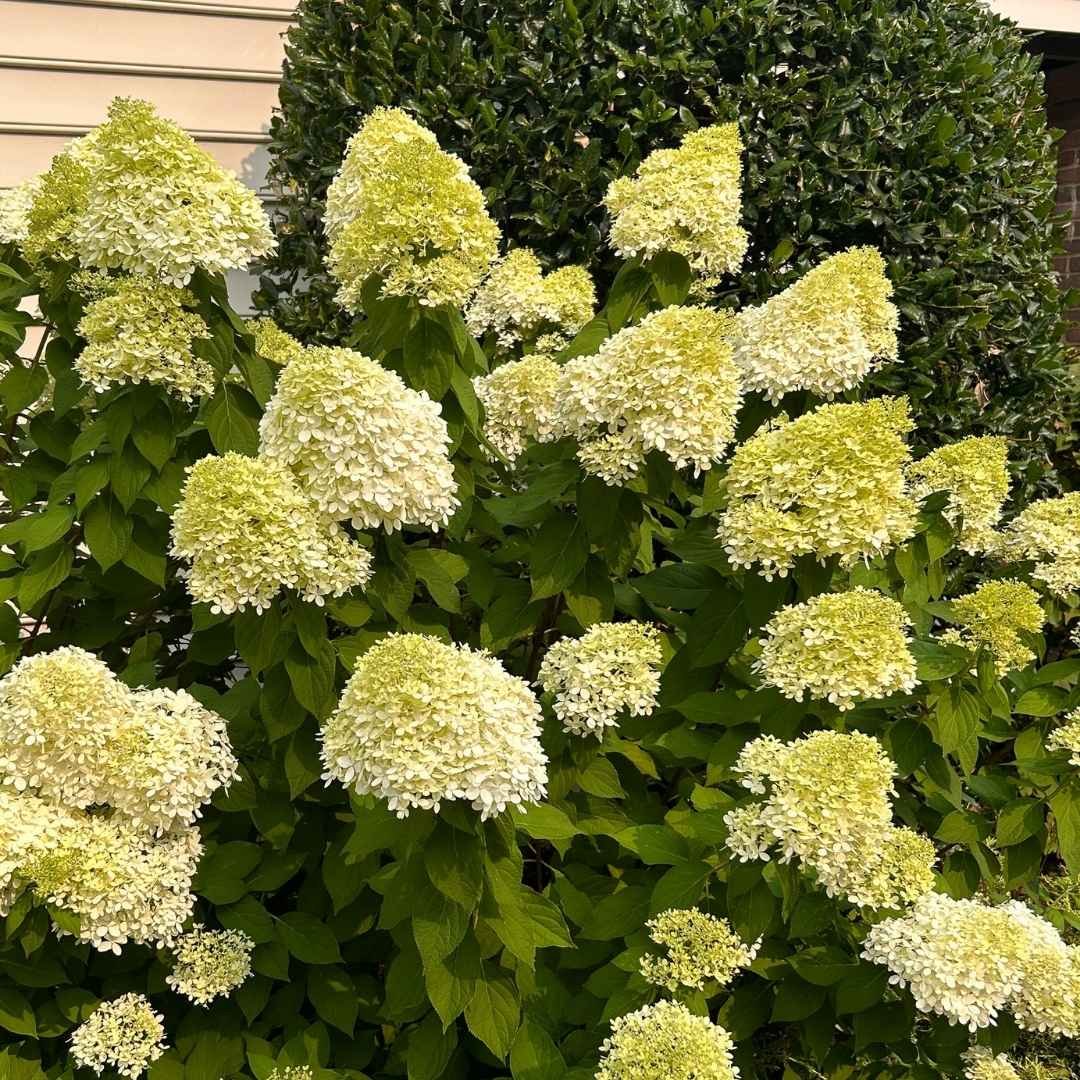






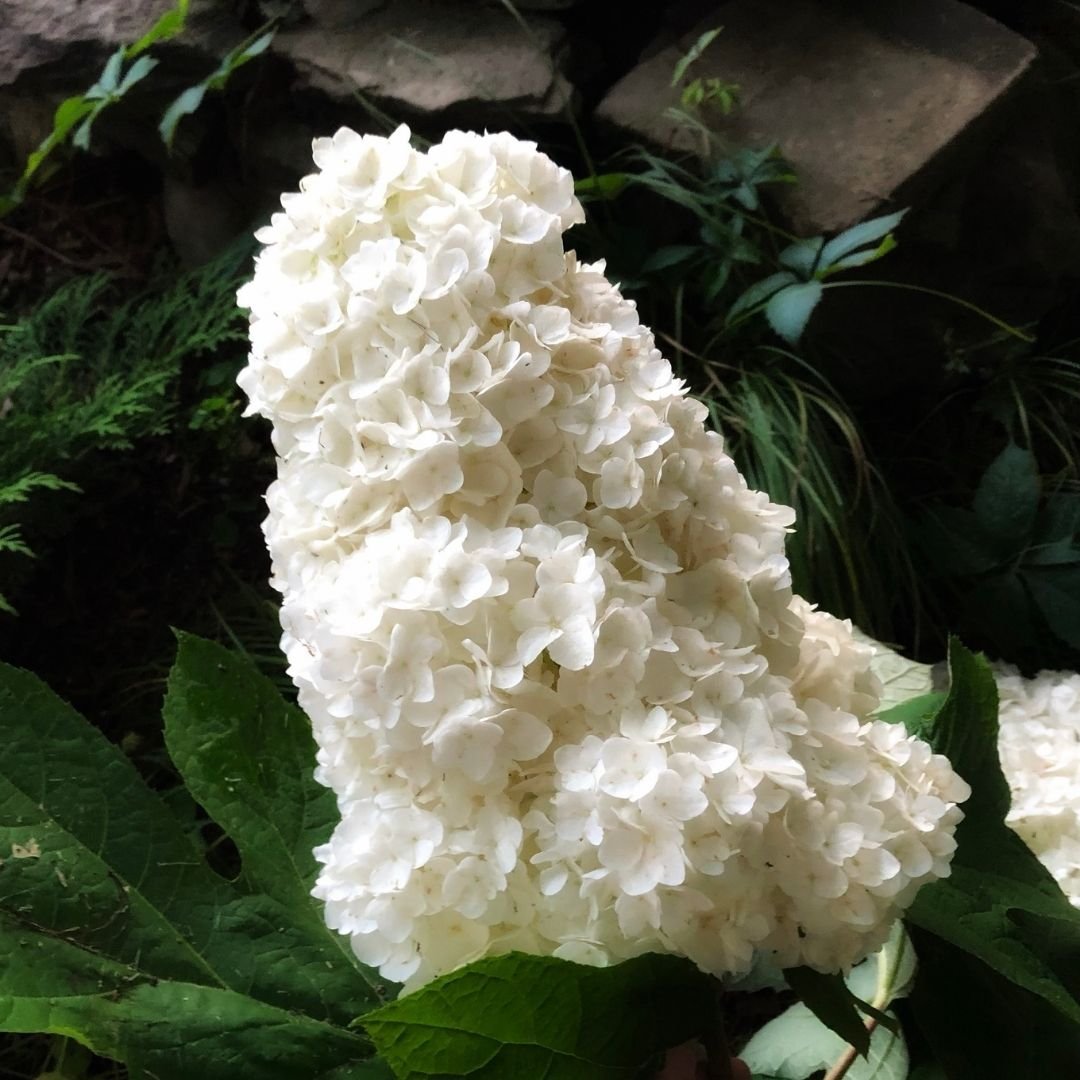
Bring drama to your garden with dark foliage and mophead blooms!